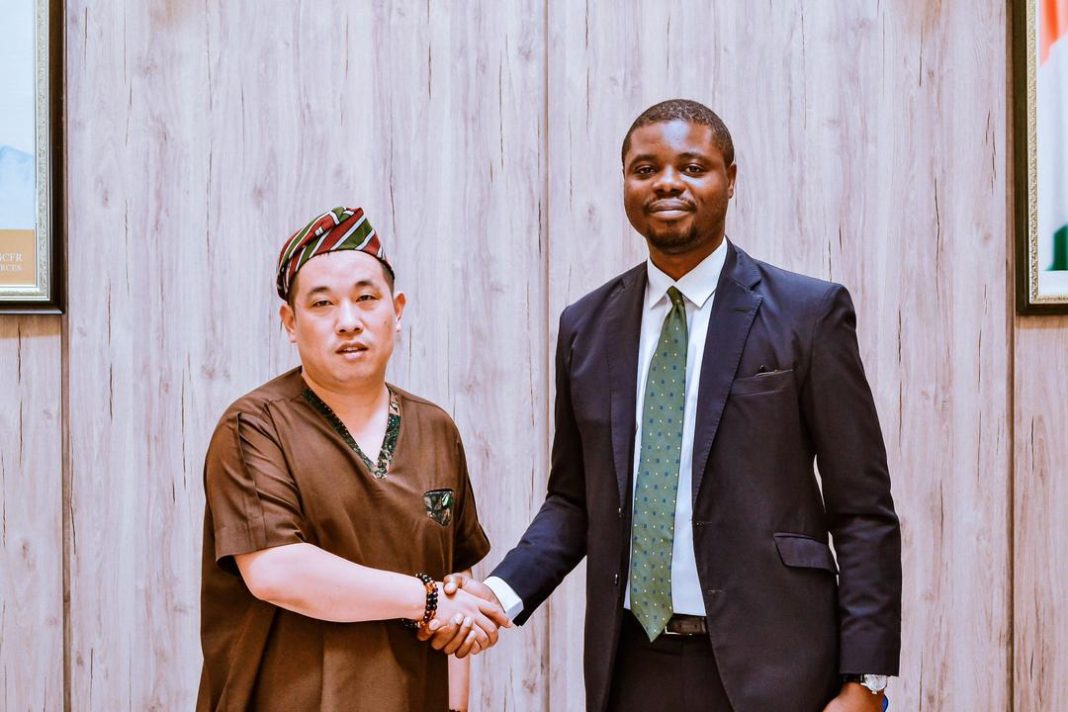The sweeping sands of time have long obscured the stories of early connections between China and Africa. Yet, as historians and archaeologists unravel the past, it becomes increasingly clear that the ancient Silk Road—while famous for linking China to the Mediterranean and the Middle East—played an understated but pivotal role in setting the stage for China’s modern relationship with Africa.
A Meeting of Two Worlds
To picture the Silk Road, one might think of bustling caravans winding through the deserts of Central Asia, laden with silk, spices, and porcelain. But the Silk Road wasn’t just a singular route. It was a sprawling network of land and maritime trade pathways that extended far beyond its most famous reaches. By the 1st century CE, Chinese goods were making their way to Africa, often indirectly, through intermediaries from the Arab world, India, and Southeast Asia.
On Africa’s side, demand for Chinese goods was rising. Artifacts from ancient Chinese dynasties—such as silk, ceramics, and even coins—have been unearthed in regions like the Swahili Coast of East Africa, a testament to this connection. In turn, Africa exported commodities like ivory, rhinoceros horn, and gold. These goods flowed through bustling hubs like Zanzibar, Kilwa, and Mogadishu, then onward to the Middle East and South Asia, before reaching China.
The Maritime Silk Road: A Key Player
While overland Silk Road routes are often the focal point, the Maritime Silk Road was equally transformative. By the Tang Dynasty (618–907 CE), Chinese traders were sailing through the Indian Ocean, relying on advanced navigation techniques and monsoon winds to reach ports in modern-day Kenya and Tanzania.
Inscriptions and pottery fragments found along the Swahili Coast hint at these exchanges. For example, during the Ming Dynasty (1368–1644 CE), the legendary Chinese admiral Zheng He led a series of maritime expeditions, famously visiting East Africa. His fleet brought gifts to African leaders—porcelain, silk, and other luxury goods—and returned to China with giraffes, zebras, and exotic spices. This diplomacy signaled a desire for more than just commerce; it was an early demonstration of China’s interest in forging alliances beyond Asia.
Echoes in Modern Times
Fast-forward to the 21st century, and the echoes of these ancient trade routes can still be felt. Today, China is Africa’s largest trading partner, with bilateral trade reaching $282 billion in 2022, according to China’s Ministry of Commerce. From sprawling infrastructure projects funded under China’s Belt and Road Initiative (BRI) to the exchange of technology and cultural goods, the spirit of the Silk Road has been reborn on a grander scale.
Consider Kenya’s Standard Gauge Railway, funded and built by Chinese companies, or Angola’s Chinese-backed housing projects. These ventures mirror the ancient flows of goods and knowledge, albeit now driven by geopolitics and globalization.
Critics, however, caution against romanticizing this modern relationship. Some argue that Africa is at risk of economic dependency, with Chinese loans and investments tied to infrastructure leaving several nations heavily indebted. Proponents counter that these projects provide much-needed development and create jobs, reviving long-neglected industries.
Lessons from History
What the Silk Road teaches us is that trade is rarely just about goods—it’s about people, ideas, and the blending of cultures. The artifacts found along East Africa’s shores reveal centuries of interwoven stories, from Swahili traders mastering Chinese porcelains to Chinese travelers encountering African customs.
This rich history reminds us that China and Africa’s ties are neither new nor one-sided. They are built on centuries of give-and-take, of shared curiosity and mutual benefits. The question moving forward is how both sides can continue this legacy of cooperation while addressing modern-day challenges.
As we navigate an increasingly globalized world, the Silk Road’s legacy serves as a powerful metaphor: a bridge between continents, peoples, and eras. And as China and Africa walk this shared path into the future, history will undoubtedly remain a silent but guiding partner.





